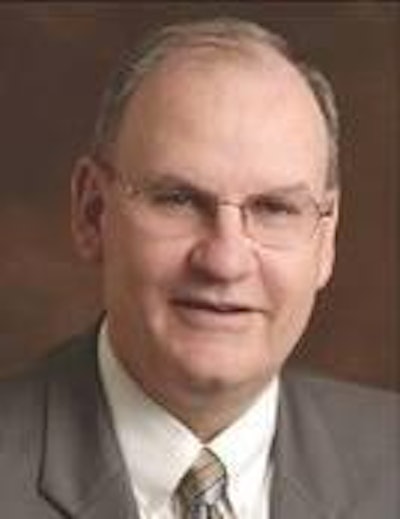
Egg Industry: John, could you review the challenges facing our industry?
John Starkey: It is evident that we are faced with challenges including changing expectations in animal welfare, environmental and food safety expectations and a deterioration in the economy. Escalation in feed costs coupled with waning demand particularly in food service represents a heavy burden for meat and egg producers.
EI: How does USPOULTRY interact with other industry organizations?
JS: We have a close working relationship with the National Turkey Federation, the National Chicken Council, United Egg Producers and the USA Poultry & Egg Export Council.
Over the past two decades USPOULTRY (previously the Southeastern Poultry and Egg Association) has assisted state and national organizations with technical and financial support.
As an "all feather" organization we have similar broad issues overriding the narrower focus of the specialty associations. Our mission includes education, communication and enhancement of productivity. Aspects of marketing and lobbying are the province of the individual associations.
EI: How do you view the recent passage of California Proposition 2?
JS: I view the passage of the Proposition as animal ag's failure to communicate with consumers.
We have done an excellent job in interacting with our customers but we have left it to them to pass on our messages about quality and wholesomeness. We have been content to accept that as a component of animal agriculture we have been low-cost efficient producers.
Consumers have a new set of expectations. Failure to communicate has created a void which is being filled by opponents of intensive livestock production.
EI: USPOULTRY is known for its educational programs. Do you see this activity continuing?
JS: The educational programs in our Poultry & Egg Institute are the "heart and soul" of USPOULTRY. Its success has been driven by the close involvement of producers and allied industry members in setting our seminar agenda and priorities. We are constantly aware of challenges and new opportunities and our seminars take advantage of available resources in universities, government institutes and industry to transfer knowledge.
In the last year, we've also started providing educational products in an electronic format addressing specific industry training needs or information resources on key industry issues.
For example, we produced a DVD-based "issue kit" that provides the benefits and rationale for aresenicals in poultry feed, and a DVD-based training program on stormwater pollution. We are excited with the responsiveness of the industry to these new products, and they will become a staple of our products moving forward.
EI: Will USPOULTRY be able to continue supporting research?
JS: Since the mid-80s USPOULTRY and its predecessor, the SEPEA, have distributed over $20 million to faculty at land grant universities and other institutions to conduct applied research. This year we hope to award grants to the value of $750,000.
Our research committees review grant applications and we favor short term projects which could be regarded as addressing immediate problems.
Our research support program allows many students at the master's and doctorate levels to become involved in our industry under the guidance of experienced faculty. Much of the federal funding today is directed at basic research in biotechnology. Grants from USPOULTRY frequently bridge the gap between basic knowledge and commercial application.
EI: A principal activity of USPOULTRY is the annual IPE. In recent years there has been talk of reducing this event's frequency. Is this a possibility?
JS: We are convinced that a major "poultry show" is sustainable on an annual basis in North America after all, we were able to attract roughly 18,000 people to Atlanta this year during a severe recession, following arguably the worst year for the modern broiler industry, and a less than stellar year for the turkey industry as well.
Given we believe an annual show is sustainable, we believe USPOULTRY an industry owned organization should continue to sponsor the International Poultry Expo annually in Atlanta so net revenues from the show are directly funneled back into the industry, serving both our members and our allied industry.
We do intend to continue to add value to the show by increasing educational opportunities during show week. Additionally, we'd like to continue growth in related industries.
Our affiliation with the American Feed Industry Association has broadened the scope of the IPE and has attracted both additional attendees and new exhibitors.
We would like to expand this approach. We are having discussions with the National Renders Association since there is common ground between both those feed industry groups and poultry.
Other affiliations are also possible again, bringing added value to both the exhibitor and the attendee.
EI: Any final thoughts for our readers?
JS: I reiterate our mission statement in which we state that we are committed to the advancement of research and education and that we must be responsive to the changing needs of our industry.
USPOULTRY absolutely promotes responsible welfare practices and environmental stewardship.
The entire USPOULTRY team identifies strongly with the industry we serve.

















